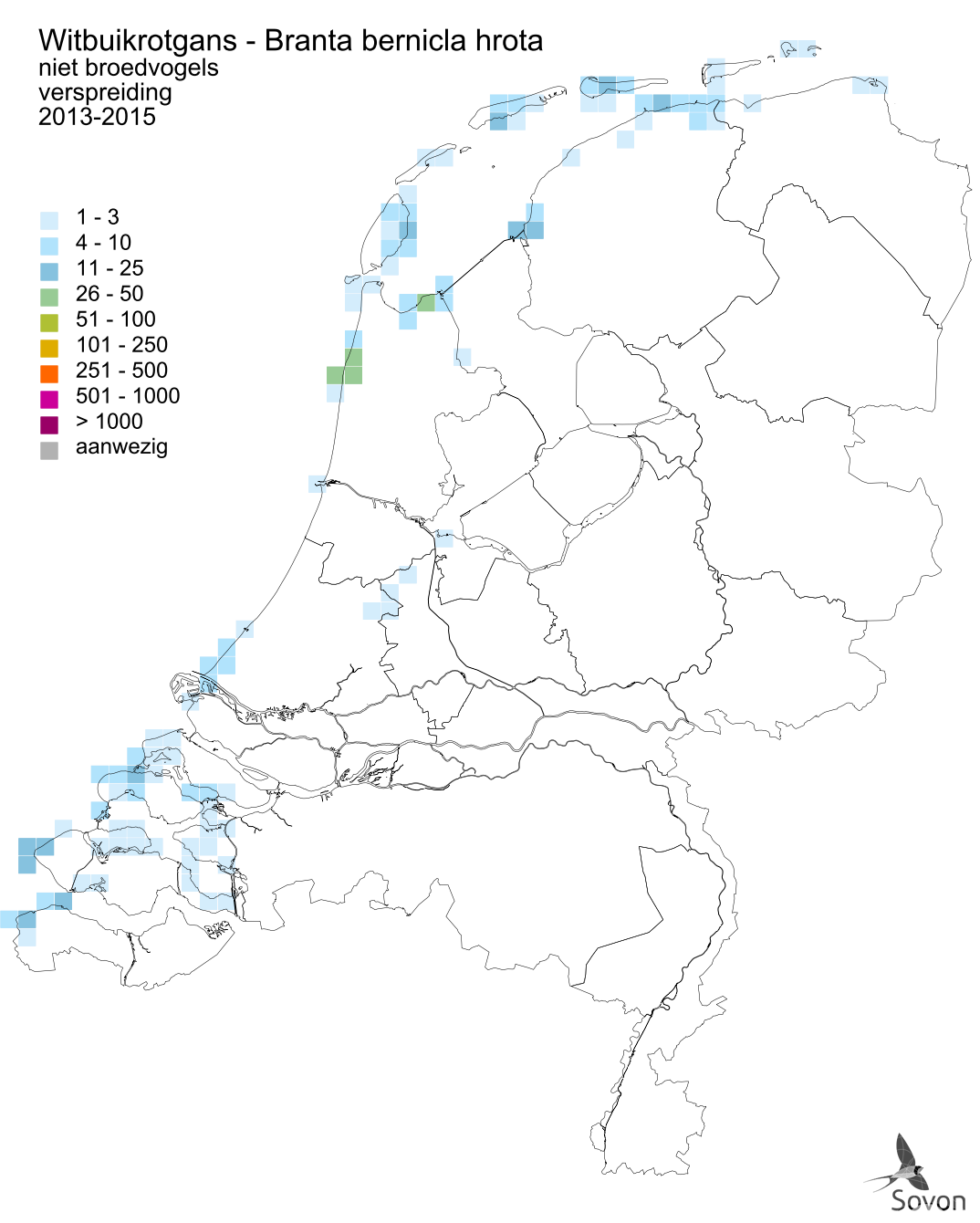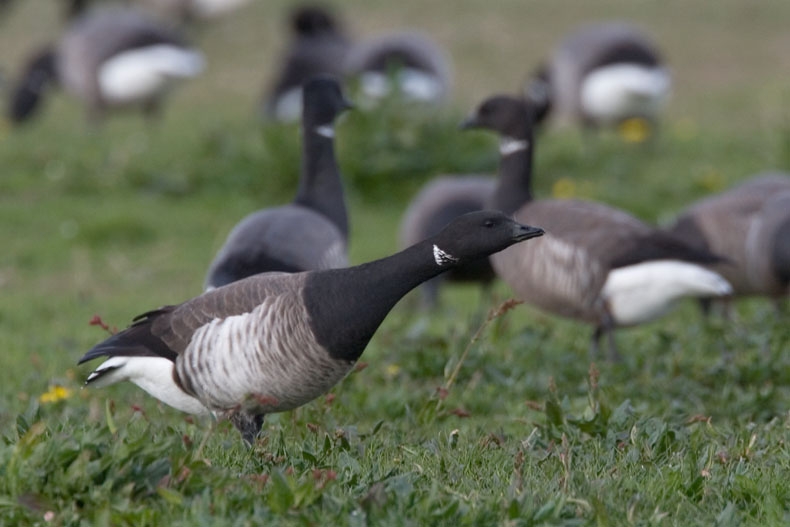Distribution and trends
Distribution

This map is derived from the Bird Atlas of the Netherlands (Sovon 2018). For each atlas square of 5x5 km, an estimate for the number of wintering birds is given.
Population trends
waterbird trend
The data comes from the Waterbird Monitoring Network. For each season, the average number of birds (red dots), the trend line (dark blue) and associated standard error (light blue lines) are given. Seasons run from July to June.
- vanaf 1980
- significant increase, < 5% a year (+)
- laatste 12 jaar
- significant increase, < 5% a year (+)
Breeding success and survival
Not enough data.
Seasonal occurrence
seasonal pattern
Data derived from waterbird monitoring scheme (mostly monthly counts during winter). Shown is the monthly average number of birds for for the last five seasons. For each month is indicated which part is counted and what part is estimated (calculated using statistical methods). The red line shows the multi-year mean. This is the average over all months of the season, from July to June of the last five seasons. Months without estimation (indicated by ?) it is assumed that there were no birds.
Occurrence description
Buiten broedtijd
Witbuikrotganzen zijn meestal schaarse wintergasten. Tijdens felle kou in de vaste overwinteringsgebieden in Denemarken of Noordoost-Engeland wijken soms enkele honderden naar Nederland uit. In uitzonderlijke gevallen, zoals de winters van 1995/96 en 2010/11 gaat het om rond 850 vogels, een tiende van de internationale populatie. De Witbuikrotganzen houden zich bijna uitsluitend op langs de kust, met een voorkeur voor het Waddengebied en het Deltagebied. Het zwaartepunt van de verspreiding ligt bij vrijwel alle influxen in de Kop van Noord-Holland en de westelijke Waddenzee. Waarnemingen van geringde individuen laten zien dat het deels om dezelfde, zich verplaatsende vogels gaat.
Birds directive
Conservation status
The Birds Directive focuses on the conservation of all naturally occurring wild bird species in Europe, including the Pale-bellied Brent Goose.
This means that EU Member States must take measures to maintain or bring the populations of these species to a level that corresponds in particular to ecological, scientific and cultural requirements.
The Birds Directive requires Member States to maintain habitats for birds of sufficient size and quality, including through the designation of Special Protection Areas for the benefit of the European Natura 2000 network. No special protection zones have been designated for the Pale-bellied Brent Goose in the Netherlands. The national population must be able to maintain itself at a favorable level.
What is the methodology to assess the conservation status of birds
non-breeding bird
The conservation status of the Pale-bellied Brent Goose as non-breeding bird in the Netherlands is favourable.
| State of Conservation Assessment | ||||
| Distribution | Population | Habitat | Future | Final verdict |
| favourable | favourable | favourable | favourable | favourable |
Assigned areas
No areas assigned
Counting guidelines
No counting guidelines available.
